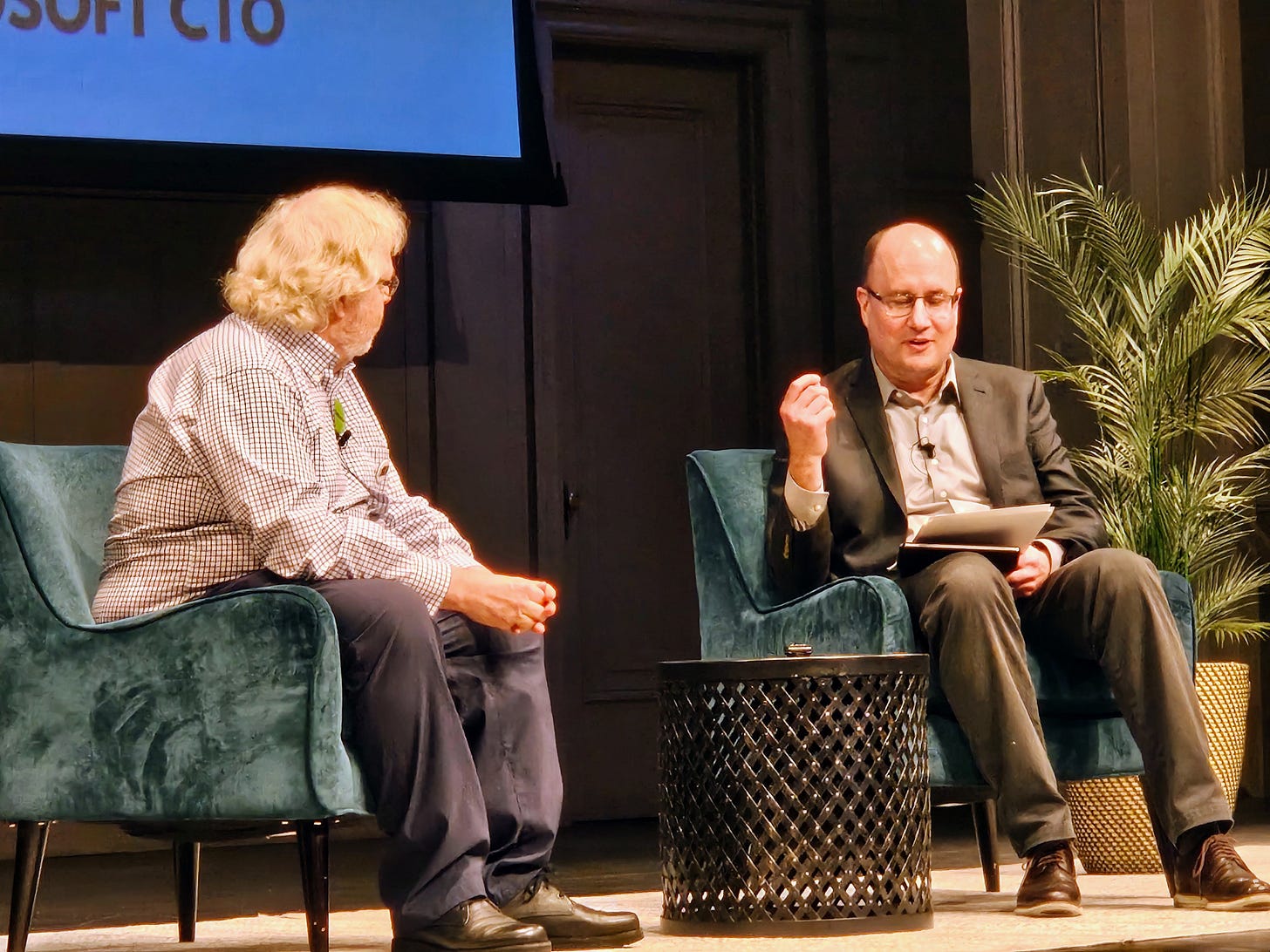Before You Build, Ask: What's the Story You Want to Tell?
Reflecting on Nathan Myhrvold's fireside chat with Todd Bishop
At the recent GeekWire event celebrating Microsoft’s 50th, Dean and I had the chance to hear Nathan Myhrvold, CTO of early Microsoft, speak. During his fireside chat, he said something that’s really struck a chord in me:
“There’s a class of human ideas that people just love having, and yet they have a history of always being wrong... The notion that progress is going to destroy us has come up over and over again throughout history.”
He gave the example of the Luddites in England—an old fear with a familiar ring.
That line hit because we’ve seen it up close. Every innovation brings with it some version of this anxiety. Not because the change is bad—but because it’s unfamiliar. And when people don’t understand something, they fear it. That’s human.
Which is why the work of the innovator isn’t just to build the future. It’s to narrate it.
Innovators Need to be Emotionally Bilingual
This is the heart of Pattern #3: Innovating with Everyone: Igniting Change by Leading with Emotion from our book. Progress doesn’t happen in a spreadsheet or PowerPoint. It happens in someone’s gut. Early adopters might be excited, sure—but the folks who aren’t ready yet? They matter too.
Innovation isn’t just about who’s ready now—it’s about making space for everyone to arrive, in their time. The best innovators are emotionally bilingual. They know how to speak fluent optimism to those ready to build—and fluent empathy to those still finding their footing.
You don’t bulldoze resistance. You sit with it, understand it, and build trust.
What’s the Arc?
Lately, I’ve been thinking a lot about the impact of storytelling on innovation. About how sci-fi often imagines apocalypse, not abundance. But what if our stories imagined futures where we don’t just survive, but thrive?
Two stories that were recommended to me recently (TY Jamē McCray) stand out: Psalm for the Wild-Built by Becky Chambers and Everything for Everyone by M.E. O'Brien and Eman Abdelhadi.
Chambers’ novella is set in a post-industrial world where robots have gained consciousness and chosen to walk away. Society has restructured itself around sustainability, simplicity, and care. It’s a quiet, solarpunk vision where a monk and a robot meet to ask big questions about purpose, belonging, and what it means to be enough. There’s no grand battle—just a gentle exploration of meaning in a world that’s already chosen a different path.
In contrast, Everything for Everyone presents a future born from collapse—a New York transformed into a cooperative commune after climate catastrophe and economic upheaval. Told through fictional oral histories, it reveals how care work, solidarity, and radically reimagined and rebuilt systems to be more humane. It's gritty but full of hope.
These aren’t utopias. But they offer believable futures shaped by collective effort, emotional intelligence, and sustainable values. If these are the kinds of futures we imagine, what does that mean for the innovations we choose to pursue? How would that shape what we design, fund, and scale?
This train of thought has led me to start asking a different kind of question: not just “what’s the ROI?” but “what’s the arc?” What kind of future are we pointing people toward? Does it include everyone? Does it feel real? Do people want to be part of it? And maybe even more fundamentally—what do we actually value? How do we measure it? These are questions I’ve been exploring with my partners at Regenerous Labs, because how we answer them shapes everything that follows.
It also reminds me of something Jon Friedman, CVP of Design & Research at Microsoft, said in our book—that bringing design and marketing into the innovation process early ensures that what we build and the story we tell are the same. That alignment is the other work of innovation: shaping not just the thing, but how it fits into the world.
The Work Ahead
Nathan’s quote reminded me that fear of progress is timeless. But so is our ability to navigate it.
Innovators aren’t just builders. We’re stewards. We see the systems. We tell the stories. We hold onto humanity—especially when everything else tries to speed past it—to bring others along, not by dragging them forward, but by creating futures they want to step into.
So I’ll leave you with this:
What story of the future are you telling?


